
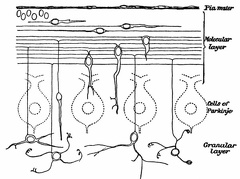 The Growth and Migration of Granules of the Cerebellum
The Growth and Migration of Granules of the Cerebellum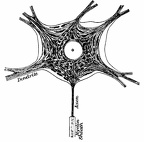 The Body of a Motor Neurone
The Body of a Motor Neurone The Surface of the Left Cerebral Hemisphere, Cerebellum,and Medulla Oblongata.
The Surface of the Left Cerebral Hemisphere, Cerebellum,and Medulla Oblongata.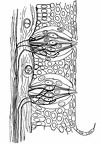 Highly Magnified Section through the Wall of a Circumvallate Papilla of the Tongue, showing Two Taste-Bulbs.
Highly Magnified Section through the Wall of a Circumvallate Papilla of the Tongue, showing Two Taste-Bulbs.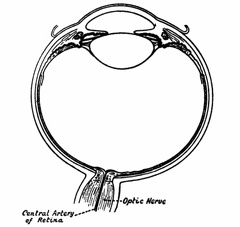 Horizontal Section through the Right Eye
Horizontal Section through the Right Eye The Retina in Vertical Section
The Retina in Vertical Section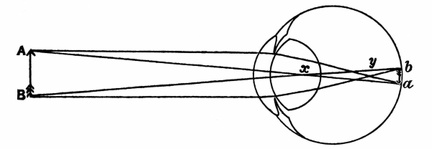 The Formation of an Image by the Refracting Media of the Eye
The Formation of an Image by the Refracting Media of the Eye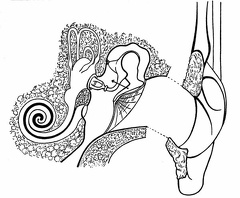 The External, Middle, and Internal Ear of the Left Side
The External, Middle, and Internal Ear of the Left Side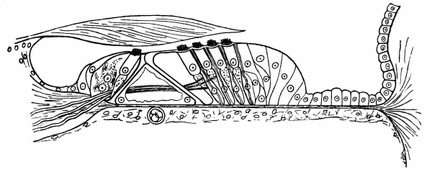 Organ of Corti
Organ of Corti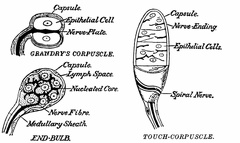 Sense-Organs susceptible to Pressure
Sense-Organs susceptible to Pressure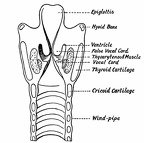 The Anterior Half of the Larynx seen from Behind
The Anterior Half of the Larynx seen from Behind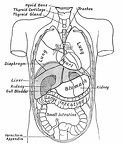 Diagram showing the Relative Positions of the Organs of the Chest and Abdomen.
Diagram showing the Relative Positions of the Organs of the Chest and Abdomen.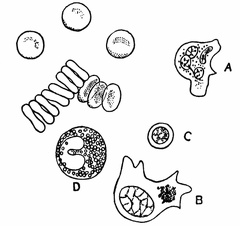 Red Blood-Corpuscles presenting, some the Surfaces, others the Edges, of their Discs, together with Single Representatives of Four Types of Leucocyte.
Red Blood-Corpuscles presenting, some the Surfaces, others the Edges, of their Discs, together with Single Representatives of Four Types of Leucocyte.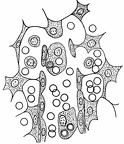 A Minute Portion of the Pulp of the Spleen
A Minute Portion of the Pulp of the Spleen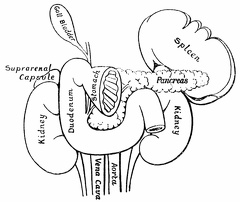 Digestive system in humans
Digestive system in humans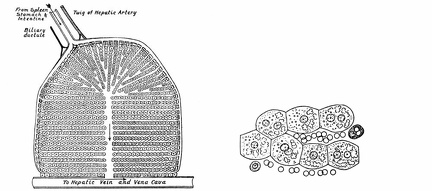 Diagram of a Lobule of the Liver
Diagram of a Lobule of the Liver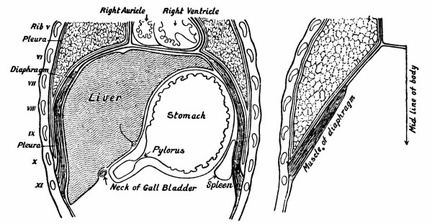 The Diaphragm and Organs in Contact with it
The Diaphragm and Organs in Contact with it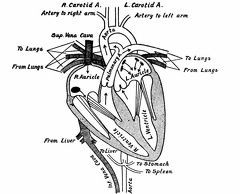 The Heart cut in the Plane of its Long Axis, and the Vessels which open into and out of it
The Heart cut in the Plane of its Long Axis, and the Vessels which open into and out of it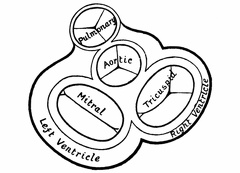 A Section approximately at Right Angles to the Long Axis of the Heart
A Section approximately at Right Angles to the Long Axis of the Heart Sphygmograph
Sphygmograph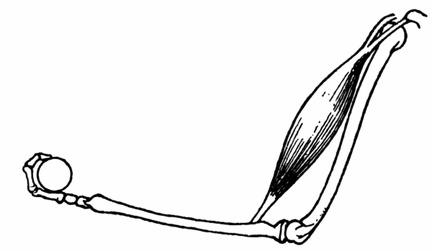 Biceps Muscle in Action
Biceps Muscle in Action



